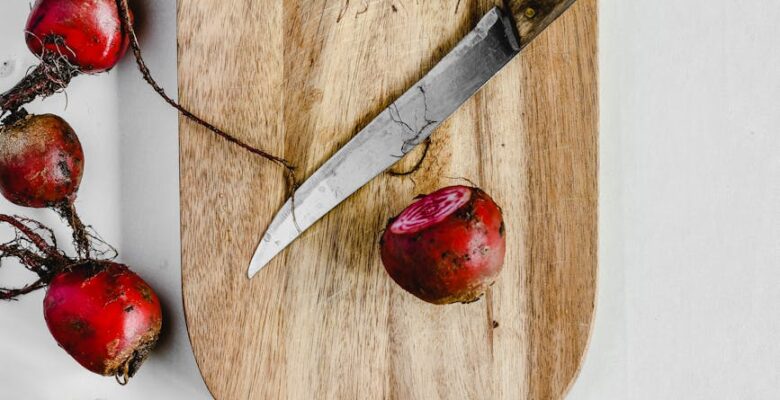This antioxidant-rich root vegetable could help reduce Inflammation. Read on to learn how.
Inflammation is not entirely negative. In truth, Inflammation is an essential immunological reaction that allows your body to recognize and remove substances that can make you sick. This regular process also repairs tissue and helps your body mend and recover. This is known as acute Inflammation. However, once a threat has passed or an injury has healed, your body turns off the inflammatory response.
However, if acute Inflammation is not treated, it can progress to chronic Inflammation and can linger for months or years. Chronic Inflammation is frequently regarded as the underlying cause of heart disease, type 2 diabetes, autoimmune disorders, and cancer, according to 2018 research published in the journal Oncotarget.
Consuming a diet high in colorful vegetables is one way to reduce long-term Inflammation and your risk of disease. Each vegetable has various phytochemicals and antioxidants with anti-inflammatory capabilities. That’s why it’s difficult to select just one. However, there is one vegetable that cannot be beaten (ha!). Beets are the most effective vegetable that helps reduce Inflammation. Let’s find out why.
Why Beets are The Best vegetable to reduce Inflammation ??
High in betalains.
Beets contain potent plant pigments known as betalains, which give them their distinct and brilliant colors.
Betalains are classified into two types:
- betacyanins: which give red beets their red-violet tint
- betaxanthins: which give golden beets their yellow-orange color
Beyond their appealing hues, betalains found in beets are powerful anti-inflammatory agents.
According to a 2021 review published in Human Nutrition & Metabolism, betalains have been proven to reduce many markers of Inflammation, decrease proinflammatory free radical generation, and protect the body from toxic compounds known as xenobiotics.
Furthermore, the authors point out that previous studies indicate that beet extracts may help reduce Inflammation in osteoarthritis.

Full in dietary nitrates.
Beets are high in both dietary nitrates and anti-inflammatory betalains. So, what precisely are dietary nitrates? They are naturally occurring molecules that the body turns into nitric oxide, an important chemical messenger that dilates blood vessels which results in increases of blood flow.
In fact, the aforementioned 2021 review states that eating beets may assist in reducing blood vessel malfunction in persons with hypertension.
Beets can also be beneficial to athletes. Nitric oxide from beet juice boosts oxygen and nutrient delivery to muscles, improving athletic performance.
Packed with manganese
Manganese is an underappreciated mineral that reduces Inflammation.
Manganese, which is frequently confused with magnesium, helps to produce and activate superoxide dismutase (SOD), one of the most important antioxidants in the body that fights cell-damaging free radicals and disease-causing Inflammation, according to a 2018 study published in Oxidative Medicine and Cellular Longevity.
Fortunately, beets are an excellent source of manganese. According to the USDA, one cup of raw beets offers around 19% of your Daily Value for the mineral.
Contains Vitamin C.
Vitamin C is an antioxidant that effectively reduces Inflammation, according to the International Journal of Medical Sciences.
According to the USDA, a 1-cup serving of beets contains around 7 milligrams of vitamin C, accounting for 8% of the daily required consumption. Beets may not contain as much vitamin C as citrus fruit, but their vitamin C level contributes to the pool of nutrients that make them particularly effective at fighting Inflammation.
Ways to Eat Beets to Reduce Inflammation
How beets are prepared has a significant impact on their anti-inflammatory properties. According to some studies the outer layer of beetroot contains an abundance of the chemicals and nutrients listed above. (The peel contains the largest levels of betalain.)
The next time you eat beets, try them raw with the peel. To remove dirt and debris, run your beets under cold water while gently washing them with a vegetable brush.
If you don’t like the peel, you can just remove it; if you prefer them cooked, steam them the next time. It is critical to prepare vegetables in the manner that you prefer in order for them to be consumed.
NOTE: When your beets are clean, feel free to use them raw in these recipes.
Spiralized Beet Salad
Ingredients
- ⅓ cup minced shallot (1 medium),
- ¼ cup extra virgin olive oil
- 1/2 teaspoon freshly grated lemon zest
- 2 teaspoons of lemon juice
- Add ½ teaspoon salt
- ¼ teaspoon ground pepper
- 2 lb beets (3 to 4 medium)
- 1/2 cup toasted slivered almonds
- 1/2 cup chopped fresh flat-leaved parsley
Directions
Place the shallot in a small bowl. Whisk in the oil, lemon zest, lemon juice, salt, and pepper until well combined. Set aside.
Clean and peel the beets. Use the narrow blade to spiralize the beets. Cut the spirals into three-inch lengths. Put the spiralized beets in a large bowl. Drizzle with the dressing and mix until evenly covered.
Just before serving, stir in the almonds and parsley.
Tips
- To get ahead, Prepare through Step 2 and chill for up to two days.
- Equipment: Spiralizer.

Ginger-Beet Juice
Ingredients
- Peel and quarter one medium orange
- 3 kale leaves
- 1 medium apple, divided into wedges
- 1 medium, peeled carrot
- 1 large beet, peeled and chopped into wedges
- 1 1-inch piece of peeled fresh ginger.
- Ice cubes (Optional)
Directions
Working in this order, juice the orange, kale, apple, carrot, beet, and ginger according to the manufacturer’s instructions. (No juicer? See Tip).
If desired, fill two glasses with ice and then pour in the juice. Serve immediately.
Roasted Beet and Barley Salad
Ingredients
- 1 ¼ pounds baby beets (10-15, depending on size)
- 6 cups of water.
- ¾ cup pearled barley, washed
- 1 ¼ teaspoon of salt, divided
- ¼ cup cider vinegar
- 2 tablespoons extra virgin olive oil
- 1 ½ teaspoons whole-grain mustard
- 1 tablespoon honey or agave nectar.
- Add freshly ground pepper to taste.
- 1 cup thinly chopped celery.
- 1 cup finely sliced radishes.
- 1/4 cup finely sliced scallions.
- ¼ cup sliced fresh basil
- ½ cup toasted walnuts or pecans, coarsely chopped (see Tip).
Directions
Preheat the oven to 400 degrees Fahrenheit.
Scrub the beets under running water. Wrap the damp beets in heavy-duty foil (or a double layer of foil) and crimp it closed to form a packet. Place the beets in the oven and roast until soft when pricked with a fork, about 1 to 1 1/2 hours, depending on size. Unwrap; after cool enough to handle, remove the skins with your fingers. Cut the beets into quarters lengthwise.
Meanwhile, in a large saucepan, add the water, barley, and 3/4 teaspoon of salt. Bring to a boil on high heat. Reduce the heat to a bare simmer and continue to cook, uncovered, for 40 to 50 minutes, until the barley is soft but chewy. Drain well and lay out on a baking pan to cool.
In a large mixing bowl, combine the vinegar, oil, mustard, honey (or agave), pepper, and the remaining half teaspoon salt. Toss in the beets, celery, radishes, and scallions until evenly coated. Allow the veggies to marinate in the dressing for approximately 15 minutes. Stir in the barley.
Just before serving, mix in the basil and sprinkle with nuts.
Tip
- To get the greatest taste out of nuts, toast them before using them in recipes.
- Spread the entire nuts on a baking sheet and bake at 350°F for 7 – 9 minutes, stirring once, until fragrant.
- To toast chopped, small, or sliced nuts, fry in a small dry skillet over medium-low heat, stirring regularly, until aromatic and lightly browned, about 2 to 4 minutes.
To Conclude
Getting to the root of chronic disease requires tackling underlying Inflammation. Beets, with their earthy flavor and brilliant colors, contain anti-inflammatory chemicals such as betalains, nitrates, manganese, and vitamin C, make this vegetable the best fighter if you are looking to reduce inflammation.
To get the most out of this delightful vegetable, add it to your favorite salad or make a refreshing drink.
